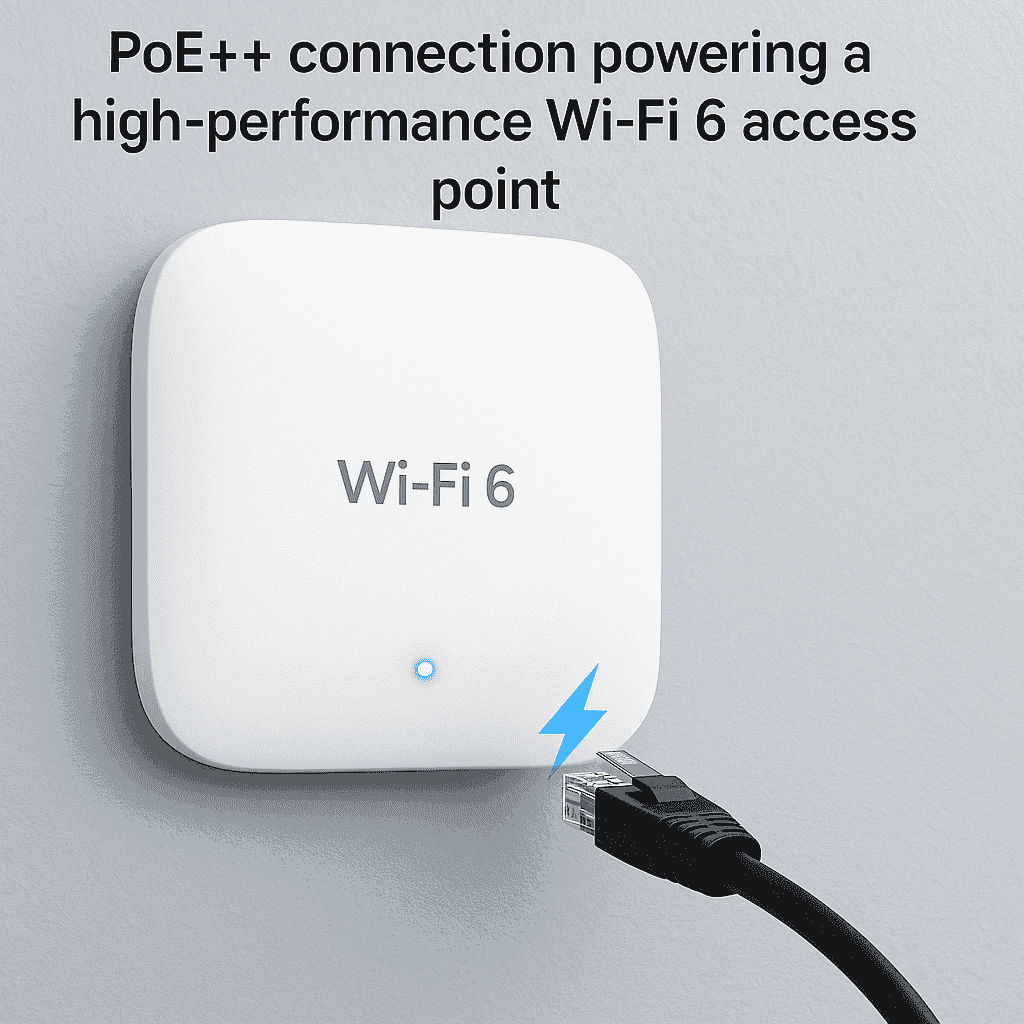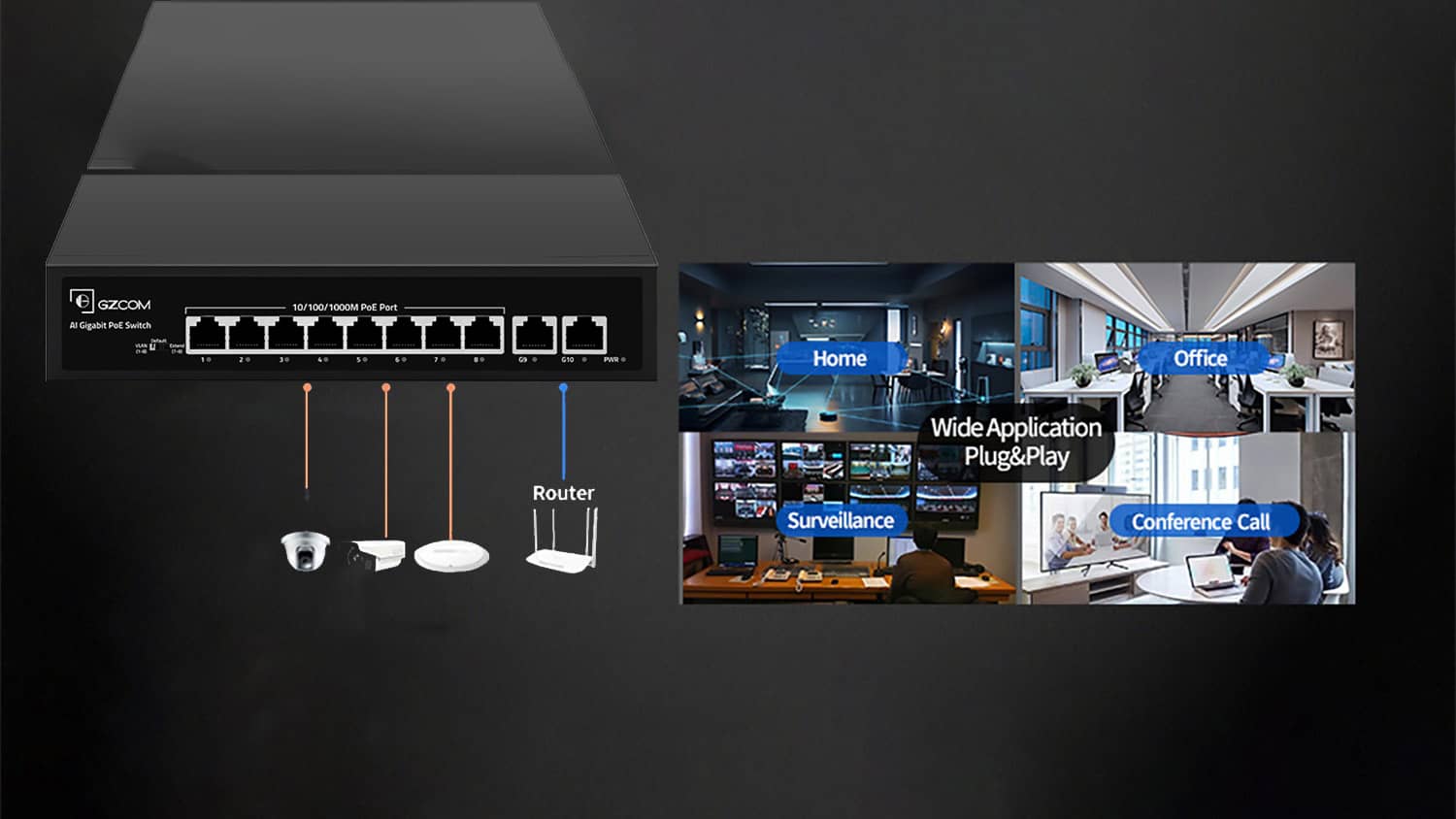Please submit your message online and we will contact you as soon as possible!
- Experience security and speed, without compromise.

2025-03-31
The steady technological progress within networking systems has generated an increasing need for innovative and high-power infrastructure solutions. The development of Power over Ethernet (PoE) has emerged as crucial infrastructure due to its ability to transmit power along with data on one cable. Building upon the success of its predecessors, PoE and PoE+, the emergence of PoE++ represents a significant leap forward, addressing the increasing power requirements of modern network devices. Understanding what is poe++ is crucial for designing and implementing efficient and future-proof network infrastructures.
The initial PoE standard (IEEE 802.3af) and its successor, PoE+ (IEEE 802.3at), provided significant benefits, powering devices like VoIP phones and basic wireless access points. Enhanced high-end wireless access points and security cameras with PTZ functionality along with advanced analytics made devices which exceeded the power capabilities of standard PoE and PoE+. The increasing power needs drove the need for better standard protocols which resulted in creating PoE++.
The latest development of Power over Ethernet technology goes by its formal name IEEE 802.3bt which is known as PoE++. PoE++ utilizes the existing standards from PoE and PoE+ to enhance the power delivery capacity through standard Ethernet cables. A poe switch that supports PoE++ technology enables single-device power supply of a broader variety of equipment which streamlines network installation while decreasing the necessity for multiple power sources. IEEE 802.3bt standard defines two different versions of PoE++ through Type 3 and Type 4.
Type 3 PoE++, also known as BT, supports power classes 5 and 6.The power output of PoE++ from a Type 3 equipped poe switch reaches 60 watts at the port level. When considering cable degradation the powered device will normally get 51 to 55 watts of power. This significant increase in power opens up possibilities for powering more demanding devices such as advanced wireless access points with multiple spatial streams and some types of LED lighting.
Key specifications for Type 3 PoE++:
Standard: IEEE 802.3bt (Type 3)
Power Classes: 5 and 6
Maximum Power Delivered by PSE (poe switch): Up to 60 watts
Maximum Power Available to PD: 51-55 watts (approx.)
Common Applications: Advanced multi-radio wireless access points, extended-range PTZ cameras, distributed antenna systems.

The current PoE technology reaches its highest point through Type 4 PoE++ which goes by the name Hi-PoE. It supports power classes 7 and 8, allowing a compatible poe switch to deliver up to 90 or even 100 watts of power at the port. The powered device receives power within a range of 71 to 90 watts. Type 4 PoE++ delivers tremendous power capability which allows users to power devices such as bulky digital signage displays, high-power LED lighting fixtures and compact servers or thin clients.
Key specifications for Type 4 PoE++:
Standard: IEEE 802.3bt (Type 4)
Power Classes: 7 and 8
Maximum Power Delivered by PSE (poe switch): Up to 90-100 watts
Maximum Power Available to PD: 71-90 watts (approx.)
Common Applications: Large digital signage displays, high-power LED lighting, small servers, and some point-of-sale (POS) systems.

The adoption of PoE++ offers numerous benefits for modern network deployments:
Increased Power Delivery: One leading advantage of PoE++ technology provides increased power supply to connected devices which enables users to operate more advanced and versatile equipment.
Support for a Wider Range of Devices: The elimination of exclusive power adapters across various devices facilitates installation simplicity and decreases cables needed for PoE++. This includes devices that previously required dedicated power sources.
Improved Efficiency: Centralized power distribution through a poe switch enables PoE++ to improve both the operational efficiency and cut energy-related costs.
Future-Proofing Network Infrastructure: A network infrastructure that supports PoE++ provides organizations with future readiness for upcoming power requirements throughout their network ecosystem.
You can find more information about the IEEE 802.3bt standard on the Wikipedia page for IEEE 802.3bt.
PoE++ enables diverse application scenarios possible because it enhances network power capabilities.
High-Performance Wireless Access Points (Wi-Fi 6/6E/7): These advanced APs often require more power to support multiple radios and high data throughput.
Advanced PTZ Security Cameras with Analytics: Cameras with features like high-resolution imaging, optical zoom, and onboard video analytics can benefit from the higher power provided by PoE++.
Digital Signage and Interactive Displays: Larger and brighter digital displays often require significant power, making PoE++ an ideal solution.
LED Lighting Systems: The combination of power distribution and control for networked LED lighting systems through PoE++ allows smart energy-efficient management of lighting networks.
Thin Clients and Small Servers: PoE++ enables simplified setup of thin client and small server deployment due to its ability to power these devices.
Point-of-Sale (POS) Systems: Integrated POS systems with multiple peripherals can be powered through a single PoE++ connection.

When selecting a poe switch that supports PoE++, consider the following:
Number of PoE++ Ports: You must determine the number of your network devices that need PoE++ capability to select the appropriate unit.
Total Power Budget: Check the total power capability of the switch to power all devices that require PoE++ function together with PoE and PoE+ devices operating simultaneously.
Switching Capacity and Speed: The selection of a switch should focus on its capacity to deal with your network's data transfer speed expectations.
Managed vs. Unmanaged Options: Your decision should consider whether your network needs advanced management functions that come with managed switches.
GZCOM dedicates itself to delivering the most contemporary networking solutions to each of its customers. The PoE++ standard availability in our PoE switches enables users to power all types of advanced network devices effortlessly and securely. The GZCOM PoE++ switch enables you to construct an infrastructure that withstands upcoming requirements because it handles future business power requirements.
PoE++ represents a significant advancement in Power over Ethernet technology, offering the increased power capabilities necessary to support a growing range of sophisticated network devices. By understanding its technical standards, power specifications, and diverse applications, you can make informed decisions about your network infrastructure. Explore GZCOM's comprehensive selection of networking solutions, including our high-performance PoE++ switches, to empower your network for the demands of today and tomorrow.
Please submit your message online and we will contact you as soon as possible!